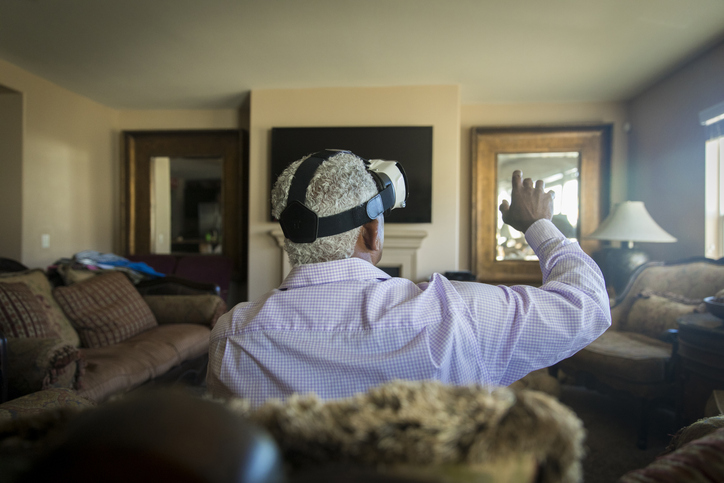Millions of Americans struggle with ongoing pain from chronic conditions — a problem that costs the U.S. an estimated $635 billion each year and has played a key role in the country’s persisting opioid crisis.
On Thursday, a healthcare virtual reality (VR) company released research that may come as good news to some patients struggling to treat their chronic pain. Van Nuys, California-based AppliedVR released study results demonstrating VR’s ability to help patients suffering from chronic low back pain, a condition that affects more than 72 million American and serves as a leading cause of disability.

With the Rise of AI, What IP Disputes in Healthcare Are Likely to Emerge?
Munck Wilson Mandala Partner Greg Howison shared his perspective on some of the legal ramifications around AI, IP, connected devices and the data they generate, in response to emailed questions.
AppliedVR was founded in 2015 with a mission to develop VR solutions that healthcare providers can adopt in a low-friction manner. The first condition that AppliedVR set out to solve was chronic lower back pain. The company partnered with Beth Darnall, a pain psychologist and director of the Stanford Pain Relief Innovations Lab, to co-develop its flagship product, the RelieVRx program.
The eight-week program is a physician-prescribed, self-administered solution for chronic lower back pain management. It allows patients to manage their chronic lower back pain without opioids from the comfort of their own home.
In 2021, the RelieVRx program became the first VR-based therapeutic to receive FDA authorization to treat chronic lower back pain. About a year and half later, CMS established a unique Healthcare Common Procedure Coding System (HCPCS) Level II code for the RelieVRx program — marking the first time a digital therapeutic or immersive therapeutic has ever been placed in an existing benefit category.
AppliedVR funded the new study, which it conducted in partnership with neuroimaging company Kernel from August 2022 to June 2023. The research partners compared brain activation patterns and physiological metrics before, during and after VR experiences in 19 people experiencing chronic low back pain (CLBP). Nine participants were in a sham VR group, and the other 10 received AppliedVR’s RelieVRx medical device, which they used in combination with Kernel’s brain imaging headset.
While participants in both the RelieVRx and sham groups experienced differing levels of pain relief after completing the program, those in the RelieVRx group experienced enhanced brain activation coherence. Participants receiving the VR sham control demonstrated a decline in brain coherence.
Brain activation coherence refers to the degree of synchronization between different regions of the brain when they are activated during cognitive tasks or at rest. It is a measure of how well different parts of the brain work together and communicate with each other.
“In chronic pain patients, the brain’s activity becomes less coordinated, which can lead to difficulties in thinking, feeling and coping with pain. When the brain’s activity becomes more coordinated, it can help reduce the severity of pain and improve the ability to manage and overcome it. The improved coherence in the brain represents an increasing ability to make sense of the world, which can reduce perceived pain and a reduced risk of developing chronic pain,” explained AppliedVR Co-founder and President Josh Sackman.
Essentially, when the brain is doing a good job of organizing its activity, this can help people interpret and cope with pain more effectively, he said.
In addition to better brain coherence, participants in the RelieVRx group achieved a slower breathing rate than those in the sham group.
“A slower respiration rate, achieved through techniques like deep breathing, has been shown to reduce blood pressure, improve oxygen absorption and increase heart rate variability — which can help reduce pain intensity and unpleasantness, improve mental health and enhance overall well-being,” noted Sackman.
The study’s findings — which show that the RelieVRx program can produce physiological changes and improve brain coherence — are important because they provide a clear marker of pain and pain improvements, which is currently lacking in chronic pain measurement, he pointed out.
Instead of relying solely on a patient’s subjective rating of pain, providers can use these physiological changes to better understand and track the efficacy of treatments, Sackman remarked. This leads to more personalized and efficient care, he added.
Photo: adamkaz, Getty Images















